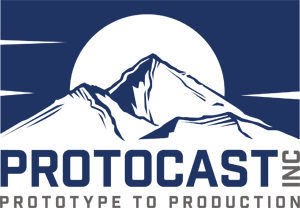
December 23, 2016 | Prototype Casting
What is Investment Casting, and How Does It Work?
Investment casting is a very important aspect of our business here at Prototype Casting. But what exactly is investment casting, and why does it matter? In today’s post, we’ll outline the process for investment casting, it’s importance, and it’s place in the context of a machine shop.
The Basics
Investment casting is a manufacturing process in which Prototype Casting specializes. The casting process involves a wax pattern that is coated with a refractory ceramic material. Once the ceramic material is hardened, its internal geometry takes the shape of the casting. Then, the wax is melted out and molten metal is poured into the cavity where the wax pattern was. The metal will solidify within the ceramic mold, and then the metal casting is broken out.
Brief History
This manufacturing technique is also known as “the lost wax process”. Investment casting is an ancient technique that has been closely followed for thousands of years. It was developed over 5,500 years ago and can be traced back to both ancient Egypt and China.
Application
Parts manufactured via the investment casting process result in products such as dental fixtures, gears, cams, ratchets, jewelry, machinery components, and other parts of complex geometry. Due to the wide variety of products that investment casting can produce, it has versatile industry applications.
Making Use of Metals
Investment casting makes use of a great number of metals, including aluminum alloys, bronze alloys, magnesium alloys, cast iron, stainless steel, and tool steel. The investment casting process is also beneficial for casting metals with high melting temperatures that cannot be molded in plaster or metal.
Additional parts manufactured via investment casting include those with complex geometry, like firearm components or turbine blades. High-temperature applications to investment casting are also common. These applications include parts for the automotive, aircraft, and military industries.
Advantages
Reliability: Investment casting provides reliable process controls and repeatability which is maintained from multiple types of casting.
Environment: In most cases, the wax from investment casting can be reclaimed and used again. The wax pattern provides a great way to see your product before it is actually cast, which eliminates expensive revisions and reduces the amount of metal scrap used.
Efficiency: Investment casting produces “near net” shapes, which significantly reduces or eliminates the amount of secondary machining. Most scrap from secondary services like machining can be reused as well.
Cost Savings: Because investment casting produces near net shapes and doesn’t waste much material, this leads to significant customer cost savings in material, labor, and machining.
Precision: Investment casting is perfect for intricate design. Design engineers can easily incorporate features like logos, product ID’s, and letters into their components.
Overall Qualities
Investment casting is an important casting technique that Prototype Casting utilizes on a daily basis. Overall, investment casting is ideal for complex geometries due to its excellent precision, investment casting can meet tight tolerance requirements, and it produces a superior surface finish, with little additional machining required.
Additionally, when it comes metal casting, investment casting does have a higher total cost as compared to other casting processes. However, it does have a lower tooling cost and is suitable for both ferrous and non-ferrous metals.


